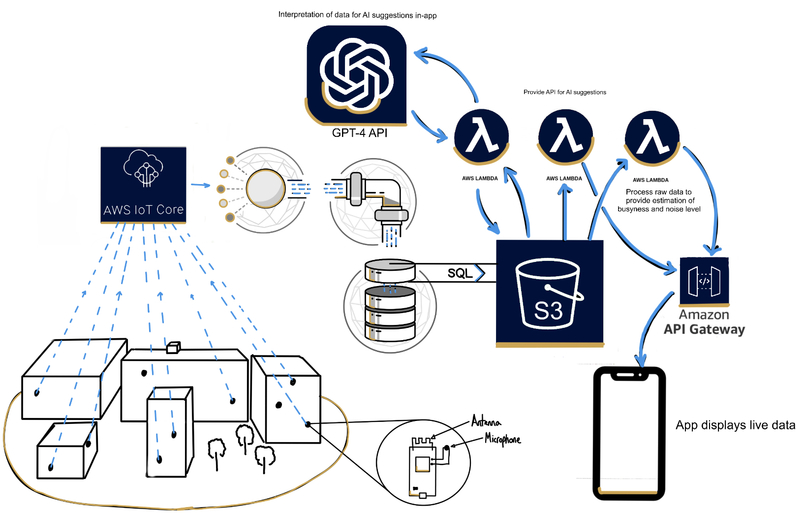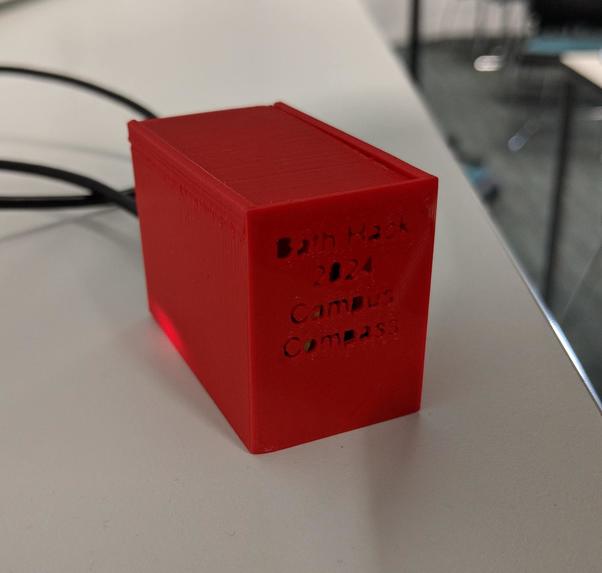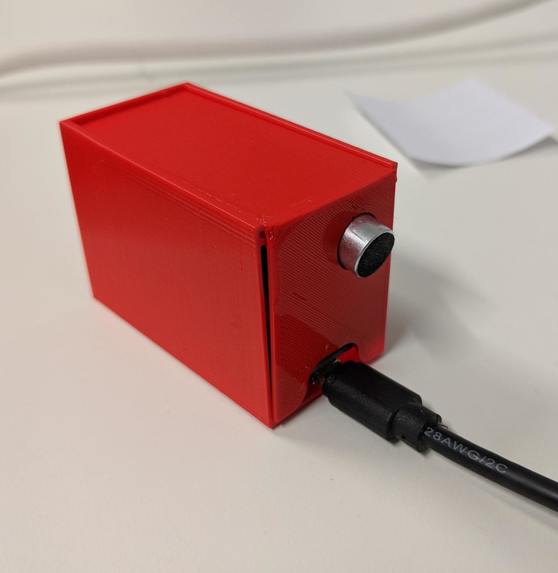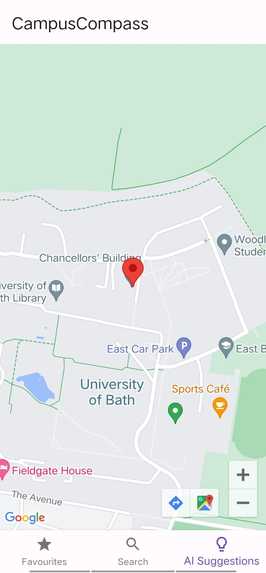Inspiration
It's early Spring. The birds are chirping, blossom's are blooming, life is good...and then you remember, exams are coming up.
You need to study, but the WiFi in your student flat is slower than a carrier pigeon with a hangover, and Joe in the room next door loves to play his guitar 27 hours a day. You need to get out.
An idea hits you - the campus! You make the trek and arrive on campus early, eager to find a quiet study spot with less band and more bandwidth. You head to the library, only to find it bustling with activity, leaving you struggling to concentrate amidst the noise. Frustrated, you decide to try another building, hoping for a quieter atmosphere, but you're met with locked doors because the building's opening hours weren't what you expected.
This scenario is all too familiar for students navigating university campuses across the globe. If only they knew where to find a quiet spot...
What It Does
Enter Campus Compass 😎
Like a compass, the whole campus fits in the palm of your hand ✋
See live occupancy data for every student study space, eatery and chill area. Ambient acoustic analysis tells you exactly which "quite spaces" really are quite, making campus more accessible for the neurodivergent. On top of this, further accessibility information and seating counts are included.
How We Built It
A network of ESP32 based IoT occupancy sensors were built and deployed across the University of Bath's Chancellor's Building. Each node monitored local WiFi client numbers and ambient sound levels before uploading anonymised metadata to AWS. Multiple Lambda functions processed this metadata into spatially aware occupancy and sound level data. This was passed via an OpenAI API to enable generation of context & user-preference aware suggestions for the user. These suggestions were stored in another AWS S3 bucket, ready for the client-facing app API calls to deliver customised recommendations to the end-user.
Challenges We Ran Into
- Correctly navigating the OpenAI payment platform/structure and API integration for both OpenAI & AWS.
- Correctly setting up GitHub SSH keys to allow pushing to a repo (user was used to the Github.Bath system, which still allows easy HTTPS authentication).
- Overcoming one team member's laptop collapsing during app development, resulting in them restarting work on another laptop.
- Successfully combining ambient sound and WiFi client detection on the ESP32 nodes without upsetting the delicate balance of process timing to ensure no buffer overflows occurred - a lesson in non-blocking operations.
Accomplishments That We're Proud Of
We are immensely proud of the progress we have made in such a short time window. Each member of the team tackled an entirely separate problem, relying on tight systems integration to ensure the full-stack of the project worked together. A project of this nature, ranging from low-level data sampling and recording, to cloud based AI inference, spans a wide range of services and techniques, which in itself is a significant challenge.
What We Learned
- API integrations
- Cloud (i.e. AWS) data storage and manipulation
- Collaborative full-stack development
What's Next for Campus Compass
- Incorporation of additional sensors 💨
- Air quality (PM2.5, etc)
- CO2
- Privacy-conscious camera-based person tracking using XMOS’s revolutionary X-Core 😍
- AI advances 🦾
- Selection of best rooms in a space based on distance to toilets/stairwells, etc
- Users can specify preferences for;
- Accessible routes
- More/less windows
- Close to on-campus accommodation
- Closer to their own department
- Scope of expansion: 🌍
- Remainder of University of Bath premises
- Number of universities in Bath: 2
- Number of universities in UK: 285
- Number of universities in Europe: 2,706
- Number of universities in the World: roughly 12,000
- Incorporating events into the app 🥳
Built With
- amazon-web-services
- c++
- embedded-systems
- flutter
- github
- javascript
- lambda
- node.js
- openai
- python







Log in or sign up for Devpost to join the conversation.